Ethical design and digital inclusion are the big topics at the eight edition of Camp Digital 2019, happening on 12th June in Manchester. The event line-up is jam packed with well-known industry names like UX veteran and co-founder of the Center Centre, Jared Spool, and the co-director at the Center for Civic Design, Dana Chisnell, who are delivering the first keynotes of the day, as well as a pre-conference workshop titled ‘Design for delight’.
Accessibility is a huge part of People for Research’s strategy for 2019. We recently launched our Accessibility Collective in both London and Bristol, offering straightforward and quick accessibility recruitment at a fixed price, so we felt compelled to look at the Camp Digital talks that will touch the subject of digital inclusion.
How accessibility can improve UX for everyone
This talk will be delivered by Curt Holst, Senior Digital Accessibility Consultant at Barclays, and will focus on the bank’s journey to become the most inclusive bank in the FTSE100.
According to Curt: “done well, accessibility brings a multitude of benefits – from improved customer experience and reach, to more engaged and productive colleagues, whilst bolstering brand and mitigating risks. However, many businesses still do not pay attention to this topic, despite accessibility becoming increasingly relevant in a growing digital landscape.”
Back in November 2018, Curt’s colleague at Barclays, Senior Digital Accessibility Consultant David Caldwell, shared his top five tips to promote company-wide accessibility.
👉 Start by visiting the Business Disability Forum (BDF) and take a look at the Accessible Technology Charter. “We’ve found this very useful for getting leaders engaged and focused,” David shared.
👉 Use different potential to engage colleagues and leaders. “Broadly speaking, leaders are interested in things which help achieve organisational goals or objectives e.g. growing the top line, reducing complaints, reducing costs, etc.). Colleagues are more interested in outcomes for themselves or improving the work they do for others (e.g. improving the user experience, building their skillset, reducing effort, for example).”
👉 Make it easy by implementing a culture of change and building tools and processes to support colleagues when delivering accessibility.
👉 Don’t go at it alone – work with partners that share the same values and can think at both a strategic and practical level. A good example is finding a user recruitment partner that has experience recruiting people with access needs for research and testing sessions, promotes digital inclusion and has a positive relationship with the accessibility community (like People for Research, for example!).
👉 Measure, measure, measure! Without goals and reports, you will have no idea if your efforts are actually making a difference. If you’re not start where to start, check out the BDF’s Accessibility Maturity Model (AMM).
Abilitynet.org.uk published a complete recap of David’s talk that you can read here.
Accessibility is usability
The other accessibility-related talk we’ve very excited about is ‘Accessibility is usability’, by Sarah Richards, founder of the content design movement and previously Head of Content Design for the Government Digital Service (GDS).
“Some organisations see accessibility as a tick-box exercise; a ‘problem’ that can be ‘fixed’ with code. But not all impairments are so easy to ‘fix’. Not all accessibility considerations are because of an impairment,” Sarah says.
Ahead of her talk at Camp Digital 2019, Sarah spent five minutes chatting with Sigma, the organisers of the event, and she shared a couple of useful tips. Organisations that don’t take accessibility seriously, usually fall into three categories.
They might think accessibility is:
+ only code and screenreaders
+ too expensive
+ not worth it for their audience
My replies would be:
+ no, it’s not and there’s so much you can do with just changing your language
+ really not, content is usually the cheapest thing to change
+ it’s not just the audience who self-identify with an impairment you can help – it’s everyone
“I’ll be discussing all the really easy things you can do to open up your services and information to the widest possible audience.” If you would like to find out more about Sarah’s techniques ahead of the event, you can read her book ‘Content design’.
Besides Curt and Sarah, the event will also count with the presence of Gavin Neate, who collaborated with the People for Research blog in the past. You can read the interview with Gavin, who is the founder of Neatebox – a company the develops digital products to make the world more accessible for everyone – here.
London-based designer and author of ‘Future ethics’ Cennydd Bowles will close the day with his keynote talk on ‘Building better worlds’. “It’s tempting to gesture wildly at what’s all around us: the slew of ethical mistakes the industry has been making, and the negative swing in press and public sentiment that’s resulted. But more positively, I think neighbouring fields can offer some answers, if we care to look,” he told Sigma in an interview.
You can find out more about Camp Digital 2019 by visiting the conference’s website.
![]() Maria Santos, Head of Digital Ops & Data Protection
Maria Santos, Head of Digital Ops & Data Protection
If you would like to find out more about our in-house participant recruitment service for user research or usability testing get in touch on 0117 921 0008 or info@peopleforresearch.co.uk.
At People for Research, we recruit participants for UX and usability testing and market research. We work with award winning UX agencies across the UK and partner up with a number of end clients who are leading the way with in-house user experience and insight.


